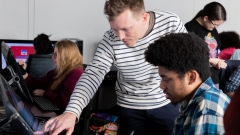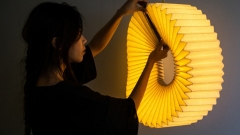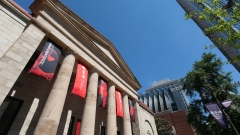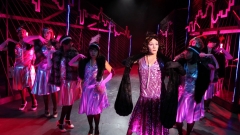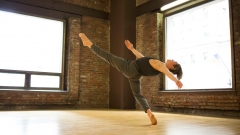Body Language: The Art of Larry Day
August 5, 2021
Oct 8–Dec 3, 2021
Rosenwald-Wolf Gallery
This fall, three venerable Philadelphia-area institutions will mount what will be the most expansive exhibition to date of the art of Larry Day (1921-1998). Body Language: The Art of Larry Day will be presented across Arcadia University, University of the Arts and Woodmere Art Museum, exploring Day’s significant contributions to American art from the 1950s through the 1990s including nearly 150 paintings, drawings and prints. The exhibition is curated by Day’s longtime friend David Bindman, emeritus professor of history of art at University College London and visiting fellow at the Hutchins Center for African and African American Studies at Harvard University.
The exhibition’s three-part structure highlights the distinct elements in Day’s career, organized around his most prominent thematic categories: abstraction, figuration and the cityscape. Together, they work in concert to reinforce the artist’s significance and lasting relevance while exploring Day’s shift from abstraction to representation.
Day achieved significant success as an abstract painter in the late 1950s and early 1960s, and his nature-based, expressionist paintings are highlighted in Nature Abstracted at Rosenwald-Wolf Gallery of University of the Arts. These paintings formed the solid foundation of his artistic presence in Philadelphia and New York. Some, such as To Pergamon (1958-1959), make reference to figurative form, while other compositions of gesture, line, and color, such as Untitled (c. 1960) evoke moods of the sky and earth.
“A CONSUMMATELY REFLECTIVE ARTIST”
Born Lorenzo del Giorno in Philadelphia, and living much of his life in Cheltenham Township, Larry Day was the son of an Italian father and Scottish mother. He attended Temple University’s Tyler School of Art following his service in World War II’s Pacific theater. He graduated in 1950 with Bachelor of Fine Arts and Bachelor of Science in education degrees and a gold medal for his scholarship and achievement in art.
Following Tyler, Day embarked on his instructional career in Philadelphia’s public school system. His service there was brief, and he soon became an influential figure in the painting department of the Philadelphia Museum School of Industrial Art (now University of the Arts), where he was a faculty member for 35 years. Day was also a critic at the University of Pennsylvania’s graduate school and at the Pennsylvania Academy of the Fine Arts. He was revered by his students and colleagues alike for his dedication to both studio work and teaching.
Body Language: The Art of Larry Day carefully examines the evolution of Day’s artistic voice, from his fascination with the work of old masters and his expert skills as a draftsman, to his deep and abiding interest in music, literature, popular culture and esoteric philosophical texts.
Subversive and running counter to then mainstream ideas in American art, Day moved away from abstraction in the early 1960s, opting instead to explore parallel fascinations with figurative and architectural subjects, probing the emotions of everyday life. In his own unique way, he participated in a component of American art that, like the emerging Pop and Hyperrealism movements of his times, sought to direct the arts to the subjects and textures of lived experience.
Day’s work is included in the collections of many museums, including the British Museum, the Art Institute of Chicago, the Eleanor D. Wilson Museum at Hollins University, the Metropolitan Museum of Art, the National Gallery of Art, the Rhode Island School of Design Museum, the Pennsylvania Academy of the Fine Arts, the Philadelphia Museum of Art and Woodmere Art Museum.
Our exhibitions are free and open to the public.

